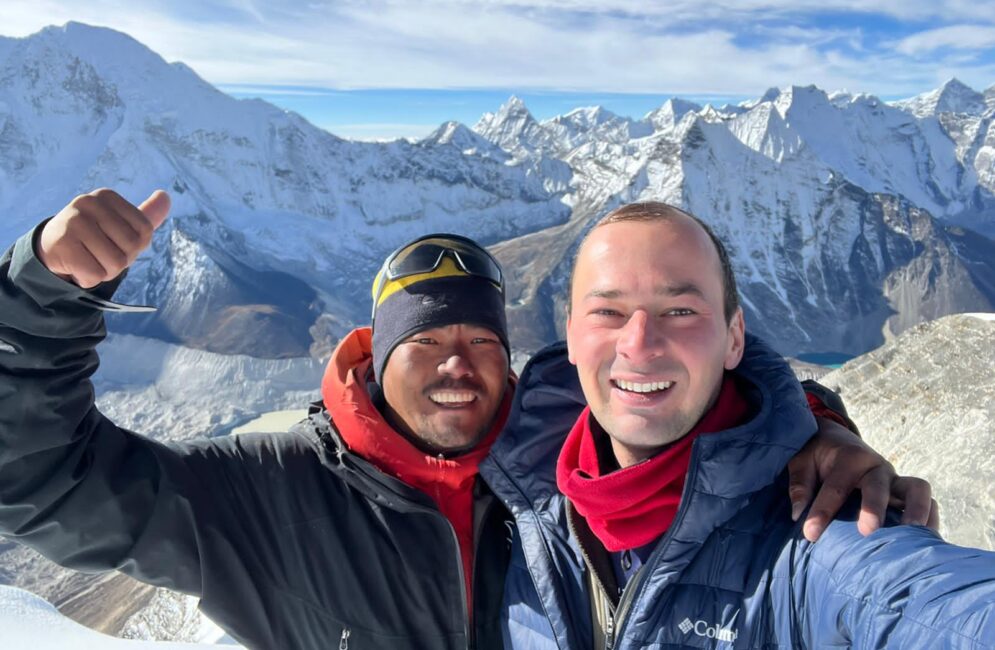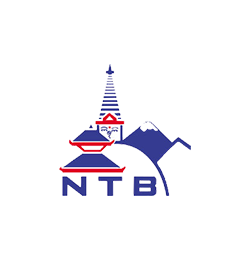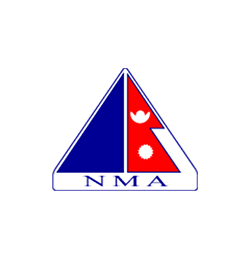
Famous for its Himalayan expeditions, Nepal is home to a variety of 6,000-m peaks suitable for climbers of any experience. Whether you’re a beginner looking for a challenge or an experienced mountaineer, Nepal’s Trekking Peaks offers an adventure like no other. Among the most exciting Peak Climbing in Nepal over 6,000m is the Island Peak trekking, Mera Peak climbing, and the technical, but highly rewarding Lobuche East Peak. Each peak delivers satisfying panoramas and unique challenges. Success depends on knowledge of high-altitude preparation, as well as the presence of a Nepal Trekking guide. Preparation is essential, from the best time for trekking to climbing permits in Nepal. Take a deep dive into the majestic Peaks of Nepal, while accepting the challenges on an epic journey in the heart of the Himalayas.
Popular Trekking Peaks Above 6,000 Meters
Step on the stairway to heavenly experiences on Earth with Nepal’s Trekking Peaks. The stunning sceneries and climbing experience of these peaks attract trekkers and climbers from every part of the world. It won’t matter if you’re a professional trekker or a beginner seeking a challenge, Nepal offers something for everyone.
Island Peak (Imja Tse)
For its majestic beauty and easily accessible, Island Peak Climbing is a popular activity for climbers. Providing a moderate level of difficulty mixed with excellent sights, this mountain offers experiences very close to Everest, Lhotse, and Ama Dablam. It is a good option for climbers who want to have a taste of technical climbing with minimal danger.
Pisang Peak
Pisang Peak provides an ideal combination of trekking and climbing in the Annapurna region of Nepal. Its moderate ascent suits beginners and experienced climbers. Spectacular views of Annapurna II, III, and IV await as you ascend. Begin your Annapurna Circuit adventure with Pisang Peak.
Mera Peak
Renowned as an easy climbing peak, Mera Peak climbing in Nepal provides stunning panoramic views of five 8,000m mountains, including Everest, Cho Oyu, and Makalu. Because of its slow climb, it is the ideal one for beginner trekkers for high-altitude trekking.
Lobuche East
For climbers seeking a challenge, Lobuche East trekking provides technical climbs and vast views of the Khumbu Region. With its steep terrain and its nearness to Everest Base Camp, it is an exciting option for experienced mountaineers. From the summit of Lobuche East, Pumori, Lhotse, and Nuptse are visible.
Singu Chuli Peak
Singu Chuli Peak, above the Annapurna Sanctuary, is a technical climb for experienced mountaineers. This Peak provides magnificent sights of Annapurna I and Machapuchare. The itinerary contains ice walls and rocky terrain along the route, and therefore it is an exciting Himalayan test for professional climbers.
Kusum Kangaru Peak
Kusum Kangaru Peak, in the Everest region, is a challenging climb with technical rocky and icy parts. Providing panoramas of Everest and Makalu, this summit serves an advanced climber looking for an extreme challenge to his/her mountaineering experience.
Kyazo Ri Peak
Kyazo Ri Peak in the Everest mountain belt is an infrequently climbed peak. It is a great sight of Cho Oyu, Everest, and Lhotse. The climb requires steep ridges and glacial slopes, which is the best activity to capture serenity as well as technical skills amid the Himalayan scenery of Nepal.
Chulu West Peak
Chulu West Peak represents the Annapurna region, with scenic views of the Annapurna and Dhaulagiri chains. The ascent includes glacier traverses and steep ridges. An ideal for climbers, that is, trekking and mountaineering together, which is an absolute must-do adventure in Nepal’s magnificent scenery.
Why Choose Nepal for High-Altitude Adventures?
Indulge yourself in an incredible adventure, blending challenging terrain, stunning vistas, and meaningful cultural encounters with Nepal’s Trekking Peaks. The country offers an extreme climbing expedition on the highest peaks of the world. The Chu Lu West, Lobuche East, Mera Peak, Kyazo ri Peak, Kusum Kangaru Peak, Singu Chuli Peak, and Island Peak offers the best climbing experience for trekkers wanting to experience Nepal trekking peaks. Those peaks are not only a challenge for climbers but also a door to the local life and ways of life that make the Nepali soul. On the trekking trails, the trekkers come into contact with colorfully living Sherpa and Tamang villages, where warmth, hospitality, and traditional customs add to the beauty. Likewise, the Lobuche East and Island Peak offer us a close view into the life of the Sherpa community of the Everest Region. There are rhododendron forests, juniper bushes, blue pine trees, Red pandas, and Snow leopards on the trekking trails of these peaks which provide a great opportunity to experience the isolated natural beauty of Nepal. From the stunning sight of the Himalayas to the cultural diversity of the Nepal trekking peaks, the adventure is a beautiful mix of adventure and legacy.
Cultural Insights of Nepal’s Trekking Peaks
The trekking peaks of Nepal are known for their adventurous climbs with the vibrant communities within which they reside. Mera Peak in the Solukhumbu area is a simple peak. The Sherpa population has a religious importance coming with the background of this peak. Monasteries such as Tengboche Monastery play an integral part in their religious practice. Ceremonies like Lhosar mark the new year and climbers passing through their communities feel the spiritual power of the Mera Peak. Island Peak (Imja Tse) is another popular peak for climbers in the Khumbu region. Sherpa populations along the route to the base camp of Everest all celebrate Saka Dawa, a festival on Buddha’s birth, death, and enlightenment. This peak represents spiritual strength to the locals. Pisang Peak is a famous pyramidal peak in the Annapurna region, which falls under the Annapurna Circuit Trek itself. Gurung and Thakali communities residing around this region are famous for their warmth and unique cultures. Their festivals, such as Tihar, Lhosar, and Dashain, are colorful and strongly bound to the soil. Holy summits such as Singu Chuli, Kusum Kangaru, Kyazo Ri, and Chulu West are religiously important to the inhabitants of the highlands. These peaks symbolize resilience and strength. Local Sherpas and climbers all have deep feelings for these peaks, and they mark cultural festivals and religious ceremonies to respect the peaks and surrounding mountains.
Regional Insights into Nepal’s Trekking Peaks
Each region offers something unique. From glaciers to hidden valleys, these peaks of Nepal promise a great adventure. Island Peak (Imja Tse) and Lobuche East are famous in the Everest Region. Their trails traverse through the Khumbu Glacier and Dudh Koshi River. Views of Everest, Lhotse, and Ama Dablam reward climbers. Perfect for combining trekking and climbing. The Annapurna region includes Pisang Peak, Chu Lu West, and Singu Chuli Peak. Pisang Peak offers Marsyangdi River views and lush forests. Singu Chuli represents the whole Annapurna Sanctuary. Glaciers, pristine landscapes, and off-the-beaten paths await adventurers while Climbing both of these peaks. Chulu East and Chulu West which are both nearby are as fulfilling for climbers seeking peace and serenity. Among the others is Mera Peak, the highest trekking peak in Nepal, providing a picturesque Himalayan panorama. Likewise, Kusum Kanguru and Kyazo Ri are less famous but equally beautiful. These peaks are perfect for climbers looking to discover the raw beauty of hidden nature in the Himalayas. Each trekking peak connects you to Nepal’s natural wonders. Rivers, glaciers, and cultural richness make the experience unforgettable. From the majesty of Everest to the calm of Annapurna, to the beauty of Langtang, Nepal’s trekking peaks provide a fulfilling thrill and fun to Climbers.
Preparing for High-Altitude Trekking
If you’re gearing up for high-altitude trekking in Nepal, make sure to gear up in the right way. Before putting on your boots and climbing mountains such as Mera Peak, Island Peak, or Lobuche East, it is essential to be physically and mentally fit. Physical exercises and fitness demands are very important for your achievement because undertaking above 6,000 m altitude needs strength, stamina, and endurance. Concentrating on cardiovascular fitness, lower leg strength, and core stabilization to get stability on the rugged surfaces and incline is very important. An essential gear checklist is equally important. Warm, multiple layers, trekking poles, and strong boots can all help with your Peak Climbing in Nepal. Don’t forget weather-specific clothing such as a sleeping bag that’s specific to altitude and a headlamp for the early mornings or evenings on the trails. Understanding altitude sickness and its prevention is key. Acclimatization is your best weapon to tackle it. Along with that, moderate climb, adequate hydration, and understanding the signs and symptoms of altitude sickness will protect you while conquering Nepal’s Trekking Peaks.
Best Seasons for Peak Climbing in Nepal
The right season selection is very important to enjoy the wonderful sights and the best conditions of Nepal’s Trekking Peaks. There is a different appeal in each of the seasonal times, from the abundant “green” of spring and clear brilliant skies of autumn.
Spring (March-May) is a wonderful time of year for Peak Climbing in Nepal. The trails of these peaks are full of colorful rhododendrons and other flowering plants and provide a splash of color against a backdrop of the Himalayas. The weather is mild, with clear skies and pleasant temperatures, although some snow may still remain at higher altitudes. This season also falls in Holi festivals which adds cultural colours to your Peak Climbing in Nepal.
Autumn (September-November) is the most popular trekking season. The weather is clear with good visibility so it is the best time for excellent views of the Annapurna and Everest regions while embarking on Chu Lu West and Lobuche East Peaks. The sky is clear, and the scenery full of mountains gets more amazing with clouds or ending monsoonal rain. Major Festivals like Dashain and Tihar bring fun to Nepal’s Trekking peaks during this time of the Season,
Winter (December-February) provides less-crowded trails, however, comes with cold weather and snow. The icy atmosphere and the snow blanket entire peaks at the higher altitudes of 4000 m and above. Mera Peak, Yala Peak, and Island Peak are achievable, however some preparation is important.
The monsoon season (June to August) is a time of intense rainfall and storms. Nepal Trekking Peaks are difficult as trails are slippery and there is a potential for landslides. The presence of lush vegetation and less congested trials may be attractive to others, but it is necessary to care about high-altitude treks during the Peak Climbing Expedition in Nepal.
Climbing Permits for Nepal’s Trekking Peaks
Climbing permits are very necessary for Nepal’s Trekking Peaks. Nepal Mountaineering Association (NMA) manages the permits. A Trekkers’ Information Management System (TIMS) card and the necessary National Park or a Conservation Area entry permit are all necessary. These guarantee safety, navigability, and compliance (with regulatory) requirements for summits such as Island Peak, Mera Peak, and Lobuche East. Permit fees are dependent on the season, with spring being the most expensive and winter being the least expensive. Obtaining a permit requires a licensed guide or Tour operator. Carrying valid documents, including a passport and itinerary, is a necessity. Adherence to permit regulations saves safety and helps the Nepalese economy flourish with sustainable tourism. One must acquire climbing permits to enjoy the best of Nepal Trekking Peaks. For any climb in the Himalayas from embarking on Island Peak to exploring Mera Peak, these permits provide your way to incredible Himalayan experiences.
Conclusion
From the beginner-friendly Mera Peak to the barely climbable Singu Chuli and Kusum Kangaru there is a unique challenge for the Climbers at each of the peaks. These peaks are not only spectacular because of their panorama views of the Himalayas but are closely connected with the cultures and traditions of the local inhabitants. In the Everest region, Sherpas fill their lives with devotional respect for the mountains, as do Gurungs in Annapurna and Tamangs in Langtang. Monasteries, festivals, and ceremonies all testify to the deep link between the mountain and the people. Whether you’re trekking to Island Peak or challenging yourself with Chulu West, Nepal’s trekking peaks are a journey through both physical and spiritual landscapes. To climbers and adventurers, these trekking peaks are not just peaks, but also the entryway to a better understanding of Nepal’s rich cultural and natural beauty.






